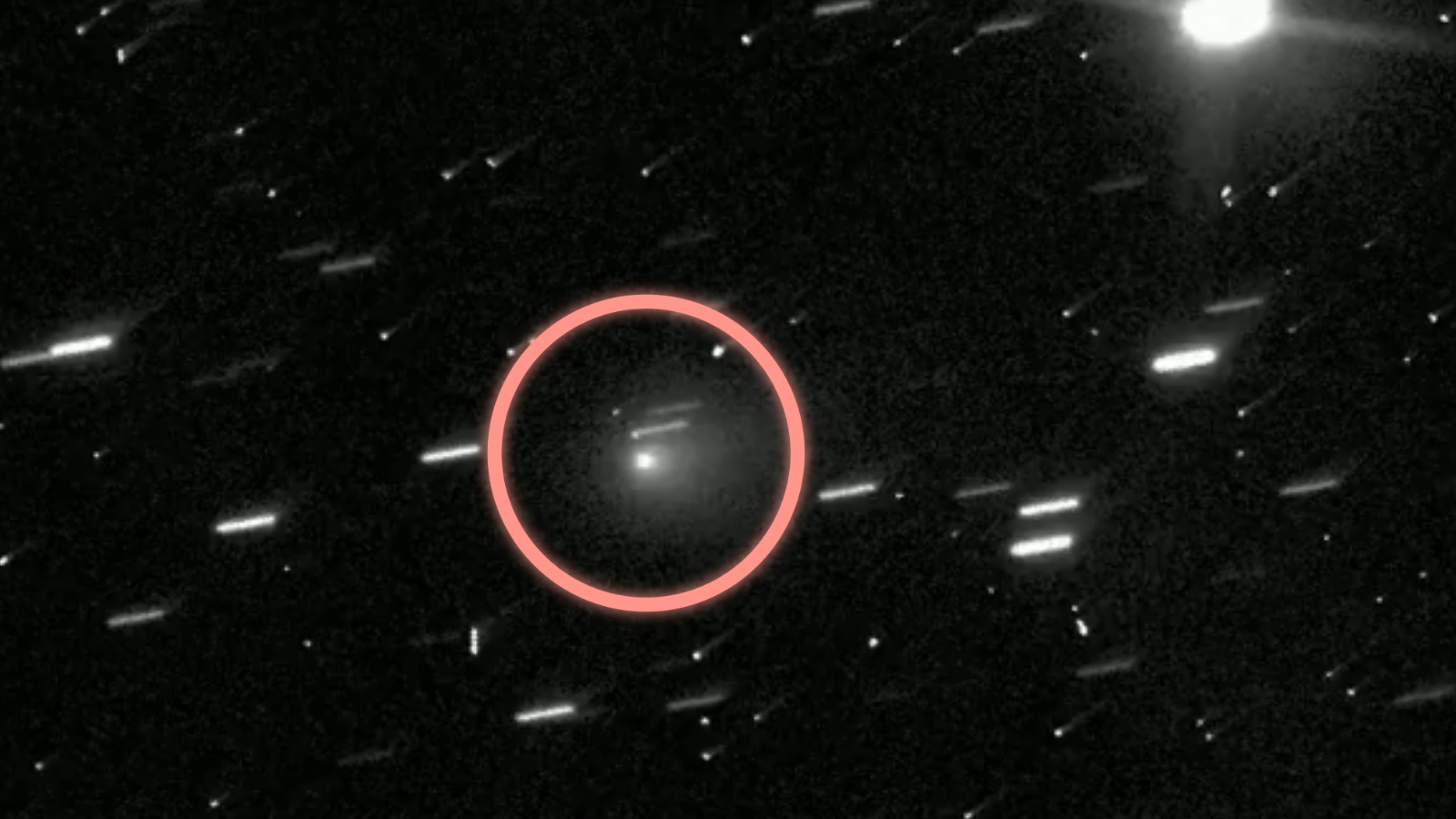A team of scientists has found the recently discovered “interstellar invader” comet 3I/ATLAS is teeming with water ice. This water could have been sealed in the comet for 7 billion years, which would make it older than the solar system itself.
The team also found a mixture of organic molecules, silicates and carbon based minerals on the object, meaning 3I/ATLAS resembles asteroids found at the outskirts of the solar system’s main asteroid belt between Mars and Jupiter.
The team’s observations, made with the SpeX instrument on the NASA Infrared Telescope Facility (IRTF), perched upon the mountain Mauna Kea in Hawaii, and the Gemini Multi-Object Spectrograph equipped on the Gemini South Telescope in Chile.
Discovered on July 1 by the ATLAS survey telescope, 3I/ATLAS is just the third object astronomers have discovered passing through the solar system from outside its boundaries.
The previous two interstellar bodies discovered in the solar system were the cigar-shaped 1I/’Oumuamua, seen in 2017, and the seeming asteroid/comet hybrid 2I/Borisov, detected two years later in 2019.
Some scientists estimate there could be as many as 1 million interstellar visitors in the solar system at any one time. It’s thought that many of these could lurk in the Oort cloud, a shell of comets located at the very edge of the solar system. The study of 3I/ATLAS and other interstellar interlopers could reveal what conditions are like in other planetary systems.
“3I/ATLAS is an active comet. It clearly shows a coma and likely contains a significant amount of water ice,” Bin Yang, the leader of this new research and a scientist at the Universidad Diego Portales, told Space.com. “Its physical activity confirms its classification as a comet. The most exciting finding was the presence of water ice features in the coma.”
Comas are the nebulous envelopes of gas and dust that surround comets. This material has been expelled from within a comet’s nucleus — that means analyzing it with a technique called spectroscopy can tell astronomers what the rock and ice of that comet is composed of.
“We obtained visible and near-infrared spectra of 3I/ATLAS as it approached the sun,” Yang said. “However, no gas emissions were detected.”
Yang and colleagues found that while 3I/ATLAS is undoubtedly a comet, some of its spectroscopic characteristics and its dust composition resemble D-type asteroids. These are bodies from the main asteroid belt with organic molecule-rich silicates and carbon with water ice in their interiors.
“Its reflectance properties are most similar to D-type asteroids and some active comets,” Yang said. “The spectrum of 3I/ATLAS can be matched by a combination of Tagish Lake meteorite material and water ice. This suggests a mixture of organics, silicates, carbonate minerals and a significant amount of water ice.”

This could also offer deeper insight into the evolution of the Milky Way. That’s because separate research has used the trajectory of 3I/ATLAS to infer that it comes from a region of our galaxy with stars that formed around 2.5 billion years prior to our 4.6 billion-year-old sun.
That gives 3I/ATLAS a prospective age of 7 billion years, which would make it the oldest comet humanity has ever seen.
“If the initial water ice detection is confirmed, it could indeed represent some of the oldest and most pristine water ever observed, formed in another planetary system and preserved throughout its interstellar journey,” Yang said.
Yang emphasized that there is yet to be a direct detection of individual compounds around 3I/ATLAS, with these results representing an inferred composition.
“3I/ATLAS is only the third confirmed interstellar object. Observing it near perihelion [its closest approach to the sun gave us a rare opportunity to study how interstellar material behaves under solar heating, an exciting and scientifically valuable event,” Yang said. “The structure of water ice carries rich information about the object’s formation conditions.”
Yang and colleagues are now awaiting complementary data from other teams using large telescopes like the Very Large Telescope and the Keck Observatory.
“Our goal is to combine these spectra to confirm the ice detection and to search for gas emissions as the object approaches the sun,” Yang concluded.
Clearly, 3I/ATLAS is set to keep scientists busy for years to come.
A pre-peer-reviewed version of the team’s research appears on the paper repository arXiv.
